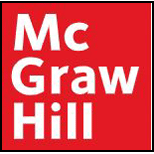
a.
To calculate: The initial cost to Mitchell Labs for going private.
Introduction:
Leveraged buyout:
It refers to the acquisition of controlling shares in a corporation by its management by using money from the outside sources.
b.
To calculate: The total value from the earnings of the division being sold as well as from the value at present for the 2.80 million shares.
Introduction:
Leveraged buyout:
It refers to the acquisition of controlling shares in a corporation by its management by using money from the outside sources.
c.
To calculate: The percentage return received by the management of Mitchell Labs due to restructuring.
Introduction:
A rate that shows the net profit or loss, an investor earns or loses on the investment over a particular time period.
Want to see the full answer?
Check out a sample textbook solution
Chapter 15 Solutions
FOUND.OF FINANCIAL MANAGEMENT-ACCESS
- What was the free cash flow for the year 2024 for Airbnb and formula used for their calculations? Explain the importance of free cash flow.arrow_forwardWhat is the useful lives for the various types of property, plant, and equipment owned by Airbnb?arrow_forwardWhat depreciation method does Airbnb employ and how does this depreciation method works? Does Airbnb have any impaired assets?arrow_forward
- New City BandAs the volunteer business manager for the New City Band (City Band), you are responsible for preparing the operating budget for the organization’s upcoming summer concert season. Each year, City Band presents up to 20 weekend performances, depending on weather conditions. The concerts are free to the public,but the band hangs a pot from the bandstand and people leave small donations in it. On average, City Band gets $100 in donations at each of its performances. In addition to donations, New City pays the band $3,000 per season plus $125 for each performance.City Band also has a small endowment of $100,000 on which it expects to earn 3.5 percent in the coming fiscal year. City Band’s trustees have decided to use that money to pay for operating expenses if they need to.City Band pays its conductor $3,000 for the summer season and has aninsurance policy to protect it against any loss of equipment or damage to the bandstand. That policy costs the band $500 for the summer plus…arrow_forwardWhat are asset type and the useful lives for a company mean?arrow_forwardWhat was the amount of cash (and cash equivalents) that Airbnb reported for the year of 2024? State the amounts for each item you included in this number. How much working capital does Airbnb have for the year 2024? State the components of working capital and calculations. What is the amount of the total assets that Airbnb reported for the year of 2024 and list the assets?arrow_forward
- What are Independent Auditors?What is a normal day for a Independent Auditor? What are their responsibilities?arrow_forwardWhat was the amount of revenue that Airbnb reported for 2024? Did the revenue grow over the prior year of 2023? What was the dollar and the percentage increase or decrease?arrow_forwardAn annuity provides payments at the end of each two-year period for twenty years. It pays $1,000 at the end of the first period and increases the payment by $1,000 in each subsequent period, so that at the end of the tenth period it pays $10,000. Given a 2% nominal annual interest rate compounded semiannually, determine in which of the following ranges is the present value of this annuity. please use tvm if neededIarrow_forward
- A. What is the amount of the annuity purchase required if you wish to receive a fixed payment of $200,000 for 20 years? Assume that the annuity will earn 10 percent per year.B. Calculate the annual cash flows (annuity payments) from a fixed-payment annuity if the present value of the 20-year annuity is $1 million and the annuity earns a guaranteed annual return of 10 percent. The payments are to begin at the end of the current year.C. Calculate the annual cash flows (annuity payments) from a fixed-payment annuity if the present value of the 20-year annuity is $1 million and the annuity earns a guaranteed annual return of 10 percent. The payments are to begin at the end of five years. I need help solving question C on a financial calculator.arrow_forwardJohn wants to buy a property for $105,000 and wants an 80 percent loan for $84,000. A lenderindicates that a fully amortizing loan can be obtained for 30 years (360 months) at 6 percentinterest; however, a loan fee of $3,500 will also be necessary for John to obtain the loan.a. How much will the lender actually disburse?b. What is the APR for the borrower, assuming that the mortgage is paid off after 30 years (fullterm)?c. If John pays off the loan after five years, what is the effective interest rate? Why is it differ-ent from the effective interest rate in (b)?d. Assume the lender also imposes a prepayment penalty of 2 percent of the outstanding loanbalance if the loan is repaid within eight years of closing. If John repays the loan after fiveyears with the prepayment penalty, what is the effective interest rate?arrow_forwardIt is now January 1. You plan to make a total of 5 deposits of $500 each, one every 6 months, with the first payment being made today. The bank pays a nominal interest rate of 14% but uses semiannual compounding. You plan to leave the money in the bank for 10 years. Round your answers to the nearest cent. 1. How much will be in your account after 10 years? 2. You must make a payment of $1,280.02 in 10 years. To get the money for this payment, you will make five equal deposits, beginning today and for the following 4 quarters, in a bank that pays a nominal interest rate of 14% with quarterly compounding. How large must each of the five payments be?arrow_forward
- Business/Professional Ethics Directors/Executives...AccountingISBN:9781337485913Author:BROOKSPublisher:Cengage
 Intermediate Financial Management (MindTap Course...FinanceISBN:9781337395083Author:Eugene F. Brigham, Phillip R. DavesPublisher:Cengage Learning
Intermediate Financial Management (MindTap Course...FinanceISBN:9781337395083Author:Eugene F. Brigham, Phillip R. DavesPublisher:Cengage Learning





